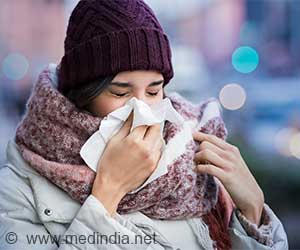Each year on 1st December, many organizations and individuals across the world come together to increase AIDS awareness and call for a move towards ending the HIV epidemic.
- Forty years since the first AIDS case was reported, HIV still threatens the world
- The shared commitment to end AIDS is stuck because of structural inequalities
- Economic, social, cultural, and legal inequalities must be ended as a matter of urgency
The red ribbon is a symbol of commitment to challenge the stigma and prejudice surrounding HIV/AIDS.
TOP INSIGHT
World AIDS Day 2021 focuses on reaching people left behind, and the growing inequalities in access to essential HIV services.
Read More..
Key Facts
- AIDS claimed 36.3 million lives so far is a major global public health issue.
- AIDS has become a manageable chronic health condition with no cure till now.
- An estimated 37.7 million people living with HIV at the end of 2020, over two-thirds of whom are in the WHO African Region.
- In 2020, 680,000 million people died from HIV-related causes and 1.5 million people acquired HIV.
- As per the report by National AIDS Control Organisation (NACO), an estimated 23.48 lakh people were living with HIV in India and approximately, 59,000 people died due to the disease in the year 2019.
- According to UNICEF, 2.78 million children aged 0-19 were living with AIDS.
- Each day in 2020, approximately 850 children became infected with HIV and approximately 330 children died from AIDS-related causes, mostly because of inadequate access to HIV prevention, care, and treatment service.
- To reach the new proposed global targets, we need to redouble the efforts to avoid the worst-case scenario due to HIV service disruptions during COVID-19, and the slowing public health response to HIV.
Impact of COVID-19 on HIV/AIDS
The COVID-19 pandemic caused widespread disruption to health services in many countries. Disruption to HIV services, as high as 75 percent, has been reported in some countries.The risk of developing severe or fatal COVID-19 was 30 percent greater in people living with HIV compared to people without HIV infection.
In 2020, a WHO survey has found that during the peak of COVID-19, 73 countries ran out of HIV medicines and 24 countries had a low stock or disruptions in the supply of these life-saving medicines.
End Inequalities, End AIDS
This year’s World AIDS day theme is “End inequalities. End AIDS,” which highlights the urgent need to end the inequalities that drive AIDS and other pandemics around the world.The world risks missing the target to end AIDS by 2030 not because of a lack of knowledge or tools to beat AIDS, but because of structural inequalities that obstruct HIV prevention and treatment.
Economic, social, cultural, and legal inequalities must be ended as a matter of urgency considering AIDS as a crisis to prioritize tackling the underlying social injustices.
The measures needed to tackle inequalities include:
- Community-led and people-centered infrastructure.
- Equal access to medicines, vaccines, and health technologies.
- Human rights, to build trust and tackle pandemics.
- Elevating essential workers, and providing them with the resources.
- People-centered data systems that highlight inequalities.
Every minute that passes, precious life is lost to AIDS. The time for action has come.
To commemorate World AIDS Day,
- Join the WHO and UNAIDS online events.
- Wear a red t-shirt and light a candle.
- Volunteer at the programs to support people living with HIV.
- Get tested for HIV.
- Donate to AIDS trust.
References:
- World AIDS Day 1 December - (https://www.un.org/en/observances/world-aids-day)
- End Inequalities. End Aids. End Pandemics. - (https://www.unaids.org/en/2021-world-aids-day)
- World AIDS Day 2021 - End inequalities. End AIDS - (https://www.who.int/campaigns/world-aids-day/world-aids-day-2021)
- World AIDS Day - (https://www.worldaidsday.org/)
Source-Medindia
 MEDINDIA
MEDINDIA





 Email
Email










